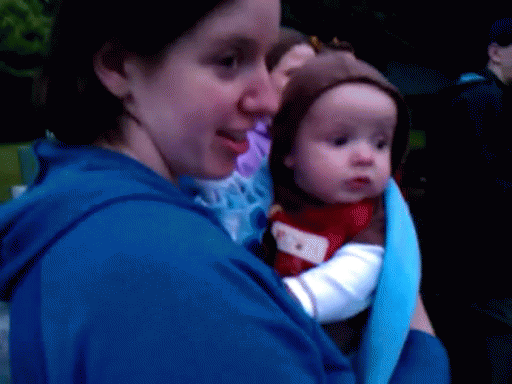Being able to read the body language of the crowd and adjust a presentation accordingly is a skill that only experienced presenters usually have mastered.
If done correctly, you can understand the predominant feeling of the group and be able to adapt to them appropriately. This can help a presentation be more accepted, and make the crowd feel like you’re really listening to them – which you are.
Now ideally you’re using these techniques while practicing a presentation before taking the stage, so you can learn how to better refine the presentation. If you do it before you present, you hopefully won’t get to the point where you have to digress too far from your intended message. Although, if you don’t have time or want to read the crowd better, these tips can be life (or presentation) saving.
Use the non-verbal signals below to read whether the crowd is excited, bored, confused, accepting or disapproving of what you’re communicating.
Head nods
One of most exciting things to see a crowd do when presenting, head nods symbolize agreement, understanding and acceptance. Slow head nods are great because they let you know this person has an understanding of what you’re saying and appreciate it. And even better, some times the folks giving you the slow nod can be a partner and if thats the case, use this energy to create more energy.
One last thing, slow head nods are good but sometimes you’ll notice somebody quickly nodding their head – this can be a sign of impatience. Don’t let this throw you off, however, if you can see whether this feeling is justified or not can give you an idea of where you may be able to extemporaneously cut fat from your presentation.
Smiles
Another great type of body language to notice in a crowd, these are also indicators of acceptance and agreement. There have been several social experiments done that show that emotions are contagious – and so having a few folks who are smiling in the room – can even improve your mood on stage and serve to provide more energy for you to draw from.
If you’re unsure of how a presentation will go over, some folks find it helpful to “plant” people in the audience to provide as nonverbal cheerleaders helping the presenter keep up the energy, and also potentially influence the folks in the crowd around them to be more welcoming.
Head shifting.Â
When people are listening to a message that they’re uncomfortable with, Â they unconsciously being to move their head away from the presenter as a way distance themselves from the message.
This is similar, but less obvious from the principle that people try to remove themselves from things they don’t like. Rather than getting up and leaving the presentation, their heads begin to move away.
You can even see it as this adorable little baby tries to move away from fireworks because he’s not quite comfortable with them – maybe because it’s his first time seeing them:
Glazed over eyes
You know the look you get when your friend is telling a really, really long story and you’ve lost interest? Yeah, they can usually tell. And this means you can tell if the audiences’ eyes are glazed over as well.
If this happens in mass, you may want to adjust your vocal variety, move more around the stage, or do something to bring them back to the presentation. Then the next time you run present this, if doing it again, be sure to reevaluate that section for areas to synthesize or chop.
Furrowed brows
Often times a furrowed brow can signify confusion, anger, or rumination. Look at the other gestures that coincide with the furrowed brow, and take into context what you may have just said to cause this – and you can easily see which emotion they’re conveying.
If you noticed many folks are confused, you may want to elaborate on a point further. If you noticed they’re pontificating, you can act accordingly as well.
Cupping of ears
When a person holds a hand up to their ear, it’s a good sign that they’re having trouble hearing you. Make sure you’re projecting your voice so that everyone – no matter where they’re seated – can hear you.
Touching neck or Adam’s apple
Touching ones neck is a common pacifying gesture that helps an individual to self-soothe and make them feel more relaxed. The stressor could be because you’re talking about a topic in which makes them feel uncomfortable, maybe it hits a nerve with them, or the worst stressor of all – the presenter and their nervousness could be translating to an audience member.
If you notice a female audience member is tugging on the skin of their neck, or playing with a necklace – it’s a good indicator that they’re trying to self soothe. The reason women go for the neck is because it’s rich with nerve endings and this pacifying gesture can help decrease blood pressure and slow down heart rate.
And if you notice this in an audience member, be sure to think internally as to whether it’s something that simply hits home for the audience member – or are you to blame as your nervousness is impacting them.
Do you notice gestures on stage and try to adjust to them? Or maybe you know of some other gestures we’ve missed. Feel free to share your thoughts below.Â

